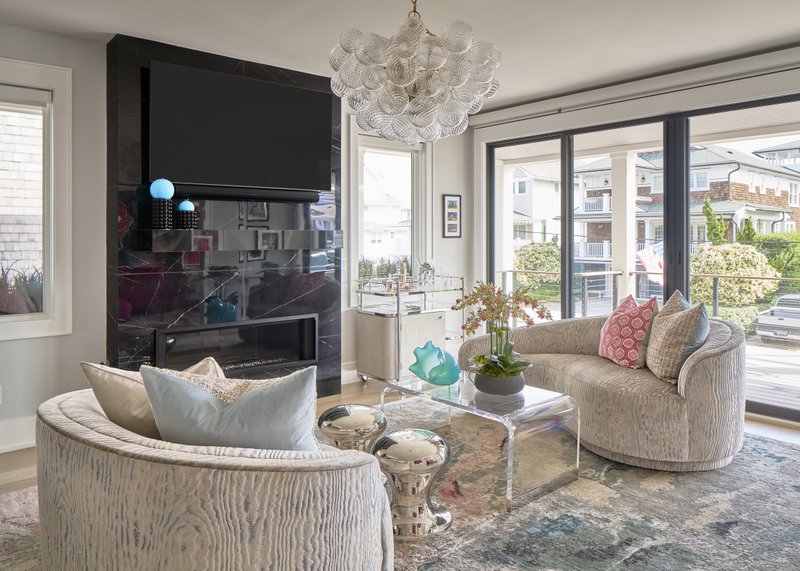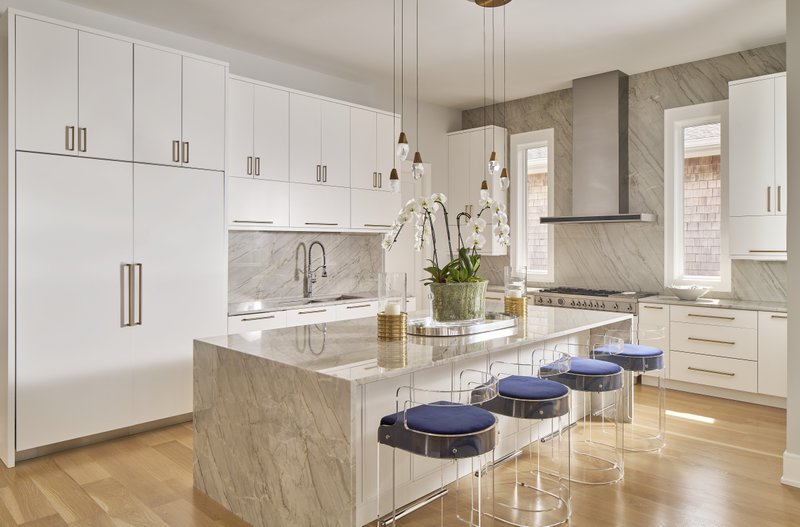What was once the stuff of science fiction, controlling your home with a voice command or an app, is now a standard feature in new builds and remodels. Smart home technology trends are no longer about novelty. They’re about convenience, efficiency, and adding lasting value to a home from day one.
As more homeowners embrace automation and interconnected living, integrating smart systems during construction has shifted from optional to essential. Future-proofing a home means anticipating where technology is headed, not just keeping up with what’s trending today. Whether designing from the ground up or renovating an existing space, thoughtful tech integration is key to ensuring a home remains efficient and relevant for years to come.
Smart Home Technology Trends That Add Lasting Value
The smartest homes aren’t just high-tech—they’re well-planned. Today’s trends reflect a growing demand for systems that streamline daily life, reduce energy costs, and enhance overall comfort. While styles and features will continue to evolve, certain trends are proving to have staying power.
Voice-activated assistants, smart thermostats, and lighting systems that adapt to routines are already common. But the latest innovations go even further. Whole-home integration allows lighting, HVAC, security, and even appliances to be managed through a centralized platform. These systems are designed to grow with the homeowner’s needs, offering both functionality now and flexibility later.
Energy efficiency is a major driver in smart technology adoption. From solar-ready systems to smart water heaters and adaptive climate control, tech-forward homes are reducing energy use without sacrificing comfort. Homes built with these systems already in place are more appealing on the market and often command higher resale value.

Built-In vs. Add-On: Why the Timing Matters
Many homeowners explore smart devices as add-ons after move-in, but there’s a growing awareness that these systems are most effective—and least invasive—when integrated during construction. Building with smart home technology in mind allows for clean installations, more secure connections, and the ability to future-proof wiring and infrastructure before drywall is ever installed.
Planning ahead allows for seamless placement of sensors, hidden cables, and structured wiring that supports evolving systems. It also ensures compatibility among devices, which reduces frustration down the road. Homes built with a solid digital backbone can support faster upgrades and are better prepared for emerging innovations.
Incorporating technology early also makes it easier to customize experiences based on lifestyle. Whether someone wants zoned lighting, smart locks with facial recognition, or an integrated home theater system, new builds offer a clean slate to design around those priorities.
Home Security and Surveillance Take Center Stage
Security systems are becoming a central focus of smart home technology trends, and they’re growing far more sophisticated. Motion-detecting lights, doorbell cameras, facial recognition systems, and remote locks now provide real-time peace of mind and complete control—even from miles away.
Today’s security platforms often integrate with the entire home ecosystem. Lights can be programmed to simulate occupancy while away, and alerts can sync directly to mobile devices. All of this adds up to not just better security, but smarter, more intuitive protection for what matters most.
Builders who understand this shift are incorporating tech-ready infrastructure from day one. Whether it’s running wiring to entry points or designing built-in control panels, preparing a home for advanced security features is now considered a best practice in modern construction.
Wellness-Focused Smart Features
Health and wellness have become central to how people think about their homes. Smart technology is rising to meet that need. Air quality monitors, smart humidifiers, circadian rhythm lighting, and automated shading systems are becoming common in homes designed with comfort and well-being in mind.

These features don’t just create more comfortable environments, they support better sleep, productivity, and long-term health. For families, these technologies can make a home feel like a true sanctuary, offering not only convenience but peace of mind.
As more wellness features connect with broader smart home systems, the ability to automate them based on time of day, season, or user preference adds another layer of personalization that goes far beyond aesthetics.
Preparing for the Tech of Tomorrow
One of the most important parts of future-proofing a home is building flexibility into its digital infrastructure. Technology moves quickly. Ten years ago, voice control seemed novel. Today, it's a household norm. In another decade, systems that use artificial intelligence to anticipate preferences may be just as common.
The homes that are ready for that future will be the ones built with expandability in mind—structured wiring, ample conduits, modular panels, and scalable software systems. And this kind of smart planning has to begin during the earliest stages of design and construction.
Builders and homeowners working together from the start can design homes that are ready not just for today’s trends but for tomorrow’s tech landscape. From smart lighting to solar integration to energy management dashboards, every decision shapes how adaptable and resilient a home will be.
Konrady & Son Construction specializes in building spaces that evolve with their owners. Whether creating fully integrated custom homes, upgrading properties through high-tech renovations, or offering tailored property services, we design with longevity and innovation in mind, so you never have to choose between timeless quality and cutting-edge convenience.
Ready to build the home of your dreams? Send us a message today.
Leave a Reply Cancel reply
site design
Monday - Friday
8:00 AM- 5:00 PM
435 Eastwood Rd
Wilmington, NC 28403